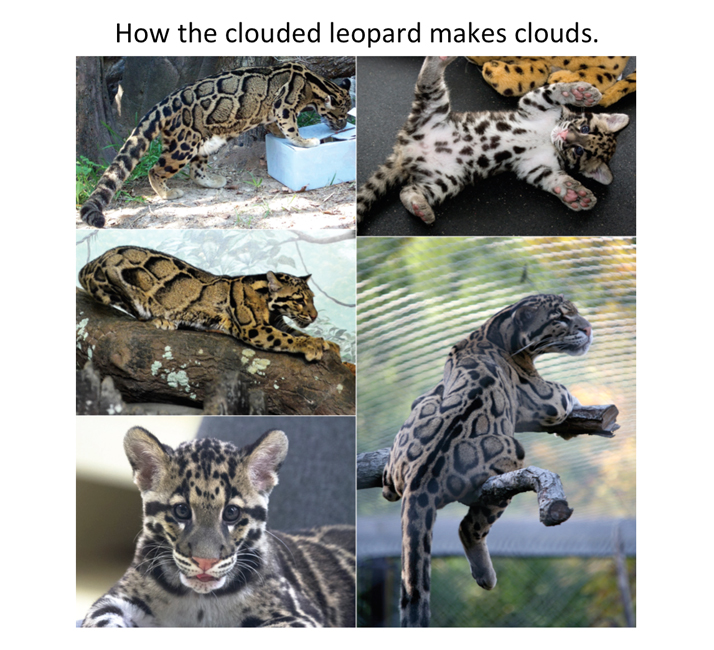| The clouded leopard, Neofelis nebulosa, which is seen here from various angles (cubs at upper right and lower left), is a walking enigma. No one knows how it makes the rounded, polygonal 'clouds' on its flanks. Most puzzling is the shading at the back of each cloud, which creates the illusion of concavity. The clouds look as if they were made by (1) launching ripples from sparsely spaced leopard-spot foci, (2) allowing these ripples to spread until they encounter ripples from neighboring centers, (3) drawing a straight line along the interface, and (4) painting a shadow inside each resultant polygon, but there is little evidence at present for this hypothetical recipe. The riddle of the clouded leopard is one of many Gordian knots awaiting the next Alexander along the evo-devo frontier. Two species of clouded leopard are recognized, based partly on pelage differences: N. nebulosa and N. diardi (not shown). Incidentally, as for why big cats have round pupils while domestic cats have slit pupils, theories do exist. Pictures are from foter.com (clockwise from upper left): Sibtigre2, Smithsonian's National Zoo, cliff1066, San Diego Shooter, and MrGuilt. |
|
leopard | cheetah compared with butterfly | anglefish | zebra | mouse cloud leopard | giraffe | ant | beetle | treehopper stalk-eyed fly | ladybird | snake | The Interactive Fly resides on the web server of the Society for Developmental Biology. |


